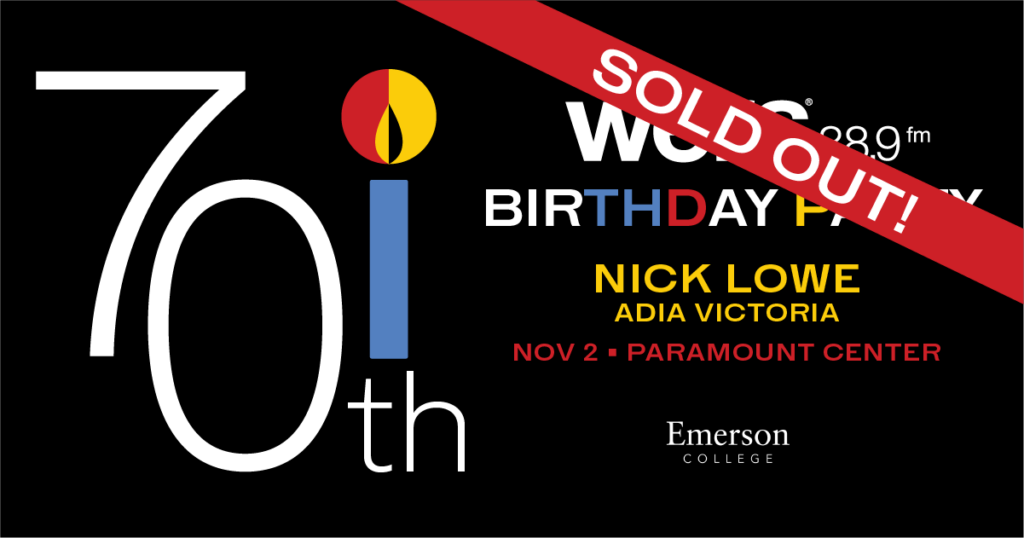
By Claire Dunham, Music Coordinator
Artist: The Japanese House
Album: In the End It Always Does
Favorite Songs: “One for sorrow, two for Joni Jones,” “Sunshine Baby,” and “Spot Dog”
For Fans Of: Muna, Beach House, and Men I Trust
It’s Pride Month! To celebrate, our music staff is reviewing new albums from LGBTQ+ musicians. This week we are taking a deep dive into "In the End It Always Does" by queer singer-songwriter The Japanese House.
In 2015, Amber Bain, aka the Japanese House, released her debut EP Pools To Bathe In— an experimental exploration of dream pop storytelling. This marked the English musician’s first release with Dirty Hit Records, and its mystical sound solidified Bain’s status as a trailblazer in the indie pop world.
The EP opens with the sound of crashing waves, but quickly grows into a complex melody consisting of sporadic electronic bursts and immersive vocals. With this simple oceanic sound, Bain launched herself into musical stardom, and she would go on to release various EPs and a full-length studio album in 2019.
Although the musician began her career with a veil of anonymity, now with the release of her sophomore album, In the End It Always Does, Bain proves that she is ready to open up and lay it all bare. Ultimately, her fears, desires, and spiraling thoughts take center stage.
A Cyclical Journey
For the Japanese House, albums are more than just a collection of songs. Instead, the musician consistently prioritizes sonic flow and clear thematic through-lines. Specifically, each song on In the End It Always Does stems from one central theme: the cyclical nature of life. This theme is also represented visually with the album’s cover art.
Throughout the duration of the album, Bain gives listeners an unguarded glimpse into her spiraling inner monologue. Denial, desire, bliss and destruction loop in a never-ending cycle. Additionally, these recurring emotions are paired with a dynamic (and cyclical) sound. From the moment the album starts, this sound takes on a natural “ebbing and flowing” pattern.
The Immersive Magic of Intro Tracks
“Spot Dog,” the first track on the record, begins with rudimentary piano plunking—a sound so simple that it mirrors a child’s nursery rhyme. Suddenly, this melody expands into an all-consuming wash of sound consisting of violins and choppy, distorted vocals. Amidst this frenzy of noise, Bain repeatedly sings “I don’t wanna go yet,” solidifying the presence of a childlike immaturity, and prompting listeners to ask, “Where do we go from here?”
For people who are unfamiliar with The Japanese House’s discography, this sporadic song may be surprising. However, each of Bain’s releases, including her first full-length album Good At Falling, open with a cinematic intro song. These tracks effectively submerge listeners in the rich, dreamy sound of The Japanese House and give them a taste of what’s to come.
Lyrics & Growth
As the album progresses, Bain dives deeper into herself. However, these emotional self-evaluations are masked by repetitive imagery (e.g., nature) and bubbly accompaniment. Track five, “Morning Pages” is a prime example of this artistic choice—the song features Muna’s Katie Gavin, descriptions of the ocean, and a bubbly string-heavy melody. While all of these factors make the track a well produced celebration of queer joy, as a listener, you can’t help but feel as if there is more the two musicians left unsaid.
Similarly, other songs that seem more surface level like “Touching Yourself” become instantly more complex when you consider the complimentary lyrics featured in “Friends.”
Despite Bain’s willingness to tell personal stories with her lyrics, it’s clear that the musician is still held back by doubt and fear. This is why the album’s lyrical growth is so satisfying. As listeners, we get to see Bain work through these hesitations in “real time” as the album grows into something more intensely vulnerable.
Coming Full Circle… Literally
By the time the final song, “One for sorrow, two for Joni Jones,” comes around, it is obvious that Bain has come to terms with the heartbreak and self-doubt that plagued her in tracks like “Spot Dog” and “Touching Yourself.” Although it is clear that the musician has not solved all of her looming problems, the song has a distinct message of hope. Lyrics like, “When I look upon myself, I don’t see the same thing I saw a year ago,” emphasize the growth that took place over the course of this album— or, the “cyclical journey” that Bain experienced.
“One for sorrow, two for Joni Jones” begins with a simple piano melody, just like the opening of “Spot Dog.” However, there is one major sonic difference between these two piano-centric songs: “Spot Dog” was clunky, sporadic and childlike sounding, and “One for sorrow, two for Joni Jones” feels polished, orchestrated, and mature. This sonic juxtaposition reiterates, once again, the unique cyclical concept of the album, and leaves listeners meditating the artistic triumph they just experienced.


